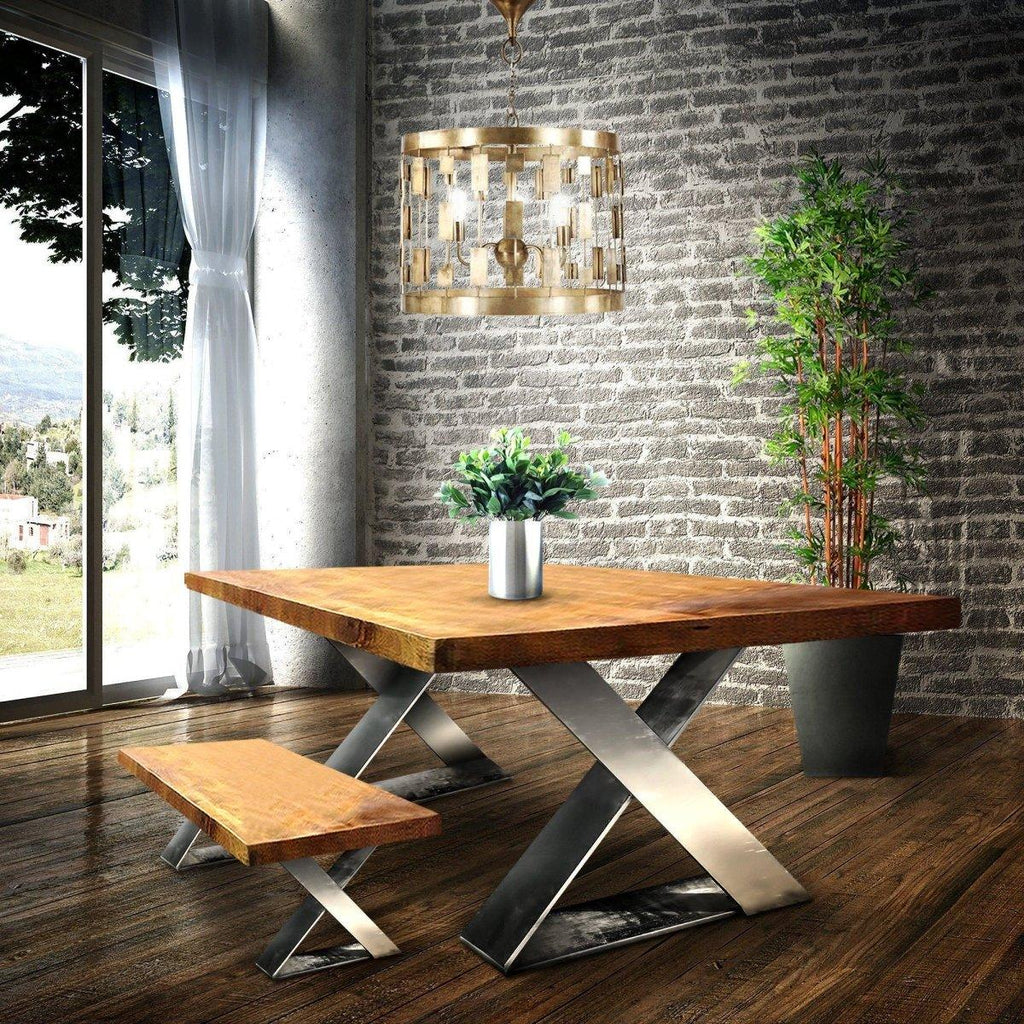From Standard to Modern: Locate the Suitable Dining-room Table Legs for Your Design
While classic layouts such as cabriole and transformed legs evoke a feeling of ageless sophistication, modern styles like barrette and geometric options provide a possibility for striking visual interest. As you take into consideration these aspects, the inquiry continues to be: exactly how can you flawlessly incorporate these diverse leg styles to develop an unified eating experience?
Comprehending Table Leg Styles
The range of eating area table leg styles can considerably influence both the aesthetics and capability of the space. Each leg design adds distinct aesthetic aspects and functional features, satisfying diverse layout preferences and use requirements. Recognizing these styles is crucial for choosing the ideal dining table that aligns with your general interior decoration vision.
For example, tapered legs offer a tidy, traditional appearance that can enhance a space's style, while pedestal bases supply stability and make best use of legroom, making them perfect for smaller sized rooms. Hairpin legs, a hallmark of mid-century modern design, introduce an industrial style, enabling for an airy, open feeling. Trestle legs stimulate rustic charm, supplying robust assistance and a sense of timelessness.
Additionally, the option of materials plays a significant duty. Wood legs can bring warmth and texture, whereas metal options frequently share a sleek, modern vibe. Eventually, comprehending table leg designs is vital for producing a cohesive dining location that reflects individual design while guaranteeing functionality and comfort. By attentively considering these components, you can improve both the practical and visual charm of your eating space.
Conventional Table Leg Options
When choosing dining-room table legs, conventional choices usually embody timeless beauty and craftsmanship. These layouts mirror a rich heritage and a dedication to high quality, making them ideal for those that value traditional aesthetic appeals.
Among the most renowned conventional leg designs is the cabriole leg, defined by its stylish bent shape. This style often includes decorative makings and is most typically found in Queen Anne and Chippendale furniture. Another preferred alternative is the turned leg, which boasts a collection of smooth, rounded forms that offer a traditional look while preserving stability.
In addition, the straight leg, while basic, offers a durable and unadorned framework that can mix flawlessly with a variety of tabletop styles. For those attracted to ornate describing, claw-and-ball feet legs evoke a sense of splendour and can act as a spectacular centerpiece in any type of eating room.
Last but not least, pedestal bases, although not purely legs, offer an alternate traditional choice that allows for ample legroom and can be wonderfully carved. Each of these conventional leg designs adds to the general atmosphere of a dining-room, marrying function with visual appeal.

Modern Table Leg Styles
Modern table leg designs use a varied range of styles that stress advice innovative products and clean lines. These layouts usually focus on functionality while serving as striking focal points within an eating area. Minimalist appearances are prevalent, with legs crafted from materials such as metal, glass, and crafted wood, which contribute to a contemporary and ventilated feel.
One preferred layout is the barrette leg, characterized by its slim, conical structure that offers stability without overwhelming the tabletop (dining room table legs). This design is frequently located in mid-century modern-day furniture and go now can easily complement various eating table forms. Another pattern is using geometric shapes, where legs might tackle asymmetrical or angular types, including aesthetic rate of interest and a touch of creativity

Blending Styles for Unique Areas
Typically, property owners look for to produce distinct dining spaces that reflect their personal style by mixing numerous design elements. This technique permits the incorporation of varied looks, resulting in a harmonious yet unique environment. Coupling a rustic wooden table with sleek, modern steel legs can create an appealing contrast that elevates the area's overall charm.
In addition, incorporating vintage table legs with contemporary table tops can evoke a feeling of history while keeping a modern-day perceptiveness. Such mixes not just display specific preference however additionally urge creativity, allowing property owners to curate a room that feels visit this site right here both personal and inviting.
Shade plays a vital role in this mixing process; selecting table legs that match or contrast with the existing color design can enhance aesthetic passion. Whitewashed legs can soften the daring of a dark table surface area, producing a balanced visual.
Tips for Selecting the Right Legs
Choosing the right table legs is vital for attaining both functionality and visual allure in your dining area. Begin by taking into consideration the general design of your room. Standard settings take advantage of legs that include intricate carvings or turned designs, while modern areas might require streamlined, minimalist styles.
Next, assess the elevation and security of the legs. dining room table legs. Standard table vary between 28 to 30 inches in elevation, so guarantee the legs enhance this dimension for convenience. Furthermore, robust materials, such as wood or metal, can boost stability and long life
Evaluate the leg shape also-- options consist of right, tapered, or pedestal designs. Straight legs use a traditional appearance, while tapered legs can include a touch of beauty. Pedestal bases offer sufficient legroom and are ideal for smaller areas.
Conclusion
In summary, selecting the excellent dining space table legs needs careful consideration of both standard and modern designs. By balancing leg style, elevation, and material with the overall décor, a cohesive and inviting ambience can be accomplished.
The selection of dining space table leg styles can substantially influence both the aesthetic appeals and performance of the area. Inevitably, recognizing table leg designs is crucial for developing a cohesive eating area that mirrors personal design while guaranteeing usefulness and comfort.One of the most legendary traditional leg styles is the cabriole leg, characterized by its graceful bent shape. Straight legs offer a timeless appearance, while conical legs can add a touch of beauty.In recap, choosing the perfect dining area table legs calls for cautious consideration of both typical and modern-day styles.